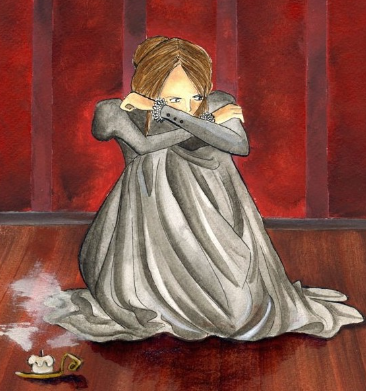Jane Eyre’s Symbolic Use of Clothing
The clothing in Charlotte Brontë’s “Jane Eyre” serves as a powerful symbol that reflects the protagonist’s inner journey, social status, and evolving identity. Understanding this symbolic use of clothing can enhance our appreciation of the novel and its themes of independence, self-worth, and the struggle against oppression.
The Significance of Childhood Attire
From the beginning of the novel, Jane Eyre’s clothing reflects her social status and treatment within the Reed household. As a child, she is often dressed in old, ill-fitting garments that symbolize her position as an outsider. The contrast between her tattered clothing and the luxurious attire of her cousins serves to emphasize her feelings of isolation and inferiority. This early depiction sets the stage for Jane’s ongoing quest for self-acceptance and belonging, illustrating how clothing becomes a marker of her tumultuous childhood experiences.
Clothing as a Reflection of Identity
As Jane matures, the evolution of her clothing mirrors her personal growth and changing identity. When she arrives at Thornfield Hall, her attire begins to reflect her newfound sense of self-worth and independence. The difference in her wardrobe signifies her desire to break free from social constraints and assert her individuality. For example, her choice to wear simple yet elegant garments during her time with Mr. Rochester conveys her rejection of societal expectations, allowing her to embrace her true self without the trappings of wealth or status.
Revealing the Inner Conflict
Brontë uses clothing to illustrate Jane’s inner conflict, particularly in her relationship with Mr. Rochester. The way Jane dresses in the latter part of the novel conveys not only her personal evolution but also the complexities of love and power dynamics. For instance, when she wears a plain dress while returning to Rochester, it symbolizes both her humility and strength. This choice demonstrates her commitment to authenticity and her refusal to let external appearances dictate her worth. By contrast, the opulent attire of Bertha Mason starkly highlights the themes of entrapment and madness, reinforcing the idea that clothing can be both revealing and concealing.
In conclusion, the symbolic use of clothing in “Jane Eyre” offers much more than mere costume changes; it speaks to the deeper themes of identity, social class, and personal growth. By exploring how Brontë weaves clothing into the narrative, readers can gain a richer understanding of Jane’s journey toward self-realization. Dive deeper into Jane’s world and consider how the garments she wears reflect not just her story, but also the societal expectations of her time. Discover the layers behind the fabric and appreciate the profound symbolism that continues to resonate today.
